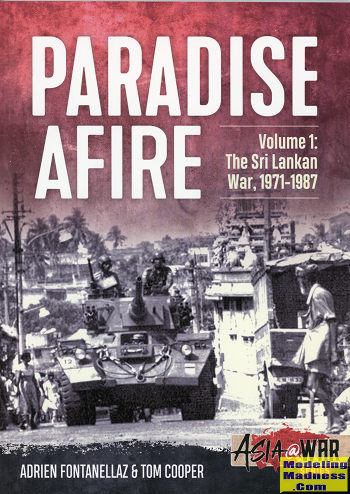 While
not the #1 cause of conflict, ethnic and religious differences have to be up
there somewhere. What often happens in these cases is that the majority starts
to ignore or oppress the minority. Such is the case with Sri Lana (Ceylon).
Ceylon has a long history of warfare between its various princes and lords
through the ages. It was not until the British took over the island in the 1800s
as they overthrew the Dutch who were in effective control of the island that
there was any sort of unifying government. It is actually more complex than
that, but that is the gist of things.
While
not the #1 cause of conflict, ethnic and religious differences have to be up
there somewhere. What often happens in these cases is that the majority starts
to ignore or oppress the minority. Such is the case with Sri Lana (Ceylon).
Ceylon has a long history of warfare between its various princes and lords
through the ages. It was not until the British took over the island in the 1800s
as they overthrew the Dutch who were in effective control of the island that
there was any sort of unifying government. It is actually more complex than
that, but that is the gist of things.
The majority in Ceylon were the Sinhalese, who had
controlled most of the island in the past. These were the people who basically
formed the government with the help of the British. The children of Sinhalese
wealthy went to the advanced schools and universities. They were the ones who
rose in government. Basically, they were the entitled. On the other hand, there
were the Tamils. They lived mostly in the northern part of the island. These
folks did not have all the opportunities of the Sinhalese and while some did
take advantage of education and government position, their numbers were quite
small.
Unsolved ethnic conflicts and social inequalities led to
the formation of a number of anti-government groups and violence broke out in
1971. These were initially low conflict events that were as much banditry as
anything and mostly against government installations and banks in the northern
part of what was now Sri Lanka after a name change in 1972.
The Sri Lankan military and police forces were not
prepared to deal with these sorts of things and so a build up in both forces
were in order. Equipment was brought in and numbers were increased to meet the
needs, though the events seemed to just escalate. At times it was so bad that
military bases in northern Sri Lanka were basically besieged and attempts to
leave the confines of the base were often met with attacks and the difficulties
of moving over mined roads. To make matters worse, insurgent groups were getting
outside training in places like Southern India which has a large Tamil
population as well as overseas in Palestine.
Eventually, the various insurgent groups came and went
while one group grew stronger and stronger. Attempts by India's government to
bring the two parties together to arrange for a peaceful settlement failed time
and time again. The many groups training in Southern India caused so much
trouble for the locals in India that India decided on military action to remove
these groups from the country and that is where this volume ends.
This volume covers the first part of the Sri Lankan war
war from the beginning of the country until the interjection of Indian military
force. As is usual with situations like this, the number of insurgent groups is
often mind-boggling. The authors do a great job of clarifying the situation as
well as delving into some of the larger actions taken by both sides to gain
ascendency. It all makes for another great Helion book regarding these sorts of
wars and I'm looking forward to reading the second volume.
In all, it is a superbly researched and well written
book. There are a considerable number of photos from that time as well as nicely
done maps and some great full color profiles. It all adds
up to a book that those with an interest in the region should have on their
shelves.
December 2019
Copyright ModelingMadness.com
Review book courtesy of
Casemate Publishing, where you can order your copy
at this
link.
If you would like your product reviewed fairly and quickly, please
contact
me or see other details in the
Note to
Contributors.
 While
not the #1 cause of conflict, ethnic and religious differences have to be up
there somewhere. What often happens in these cases is that the majority starts
to ignore or oppress the minority. Such is the case with Sri Lana (Ceylon).
Ceylon has a long history of warfare between its various princes and lords
through the ages. It was not until the British took over the island in the 1800s
as they overthrew the Dutch who were in effective control of the island that
there was any sort of unifying government. It is actually more complex than
that, but that is the gist of things.
While
not the #1 cause of conflict, ethnic and religious differences have to be up
there somewhere. What often happens in these cases is that the majority starts
to ignore or oppress the minority. Such is the case with Sri Lana (Ceylon).
Ceylon has a long history of warfare between its various princes and lords
through the ages. It was not until the British took over the island in the 1800s
as they overthrew the Dutch who were in effective control of the island that
there was any sort of unifying government. It is actually more complex than
that, but that is the gist of things.